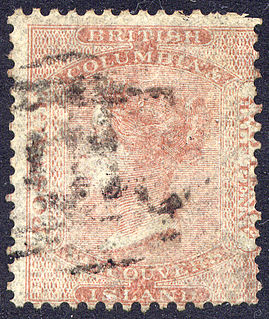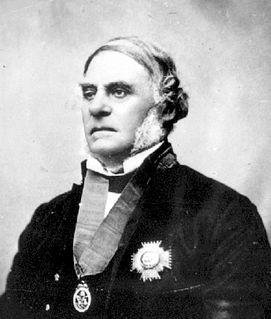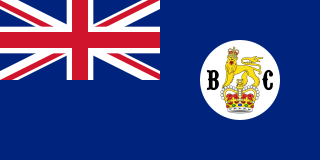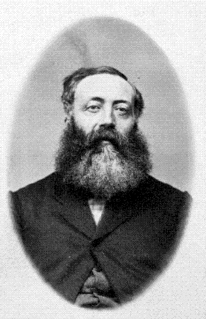Event commemorated
The colony founded in 1858 consisted of the Hudson's Bay Company's territory of New Caledonia, which covered most of the mainland of today's province of British Columbia.
That mainland colony was one of three precursors to the present-day province of British Columbia, and the province's roots as a British colony date back to the founding of the Crown Colony of Vancouver Island in 1849. The mainland colony as established in 1858 existed only until 1866, when it was amalgamated with the older Vancouver Island colony, with Victoria designated to be the capital of the merged colony, much to the chagrin of New Westminster, which had been the mainland's capital. The "new" Colony of British Columbia thereby created entered the Canadian confederation in 1871 as the Province of British Columbia. Thus, today's province of British Columbia was assembled, with its present boundaries and with its capital at Victoria, out of three separate British colonies: the Crown Colony of Vancouver Island, established in 1849 and having its capital at Victoria; the Colony of the Queen Charlotte Islands, established in 1853 and administered by the Governor of the Crown Colony of Vancouver Island; and the Crown Colony of British Columbia, established in 1858 and having its capital at New Westminster.
The three colonies were intertwined from their beginnings, as it was the Governor of the Crown Colony of Vancouver Island, Sir James Douglas, who urged Britain to create the mainland colony in 1858 and was then named its first governor who unilaterally declared the mainland colony to prevent American takeover, forcing London's hand in formalizing British possession of the mainland. From the creation of the mainland colony in 1858 until his retirement in 1864, he administered both from Victoria. He also served as sole administrator of the Colony of the Queen Charlotte Islands during its entire existence, from 1853 to 1863, when it was annexed to the Crown Colony of British Columbia.

British Columbia (BC) is the westernmost province of Canada, situated between the Pacific Ocean and the Rocky Mountains. In the 2016 Census, the province's recorded population was 4,648,055, making it Canada's third-most populous province. The capital of British Columbia is Victoria, the fifteenth-largest metropolitan region in Canada, named for Queen Victoria, who ruled the British Empire during the creation of the original British colonies in Canada. The largest city is Vancouver, the third-largest metropolitan area in Canada, the largest in Western Canada, and the second-largest in the Pacific Northwest. In October 2013, Greater Vancouver had an estimated population of approximately 2.5 million. Since 2017, the province has been governed by the New Democratic Party, led by John Horgan, first with a minority government elected in 2017 and subsequently with a majority government elected in 2020.

Vancouver Island, often simply "the Island" to residents of southwestern BC, is in the northeastern Pacific Ocean, and part of the Canadian province of British Columbia. The island is 456 km (283 mi) in length, 100 km (62 mi) in width at its widest point, and 32,134 km2 (12,407 sq mi) in area. It is the largest island on the west coasts of the Americas and is also the most populous.

The postage stamps and postal history of British Columbia started in 1860 with the issue of a single brownish-rose stamp depicting Queen Victoria in profile and denominated as 2½ pence. It was issued jointly by Vancouver Island and British Columbia as each colony had insufficient postal trade to justify printing separate stamps. In 1862, Vancouver Island adopted decimal currency and sold the stamp for 5 cents, before issuing its own 5 and 10 cent stamps in September 1865. Meanwhile, British Columbia had increased the postal rate to 3 pence but continued to use the unified stamp. In November 1865, British Columbia issued its own stamps and the unified stamp became invalid. In 1866, the two colonies were united as British Columbia.

New Westminster is a city in the Lower Mainland region of British Columbia, Canada, and a member municipality of Metro Vancouver. It was founded by Major-General Richard Moody as the capital of the new-born Colony of British Columbia in 1858, and continued in that role until the Mainland and Island Colonies were merged in 1866, and was the Mainland's largest city from that year until it was passed in population by Vancouver during the first decade of the 20th century.

Events from the year 1858 in Canada.

The history of British Columbia covers the period from the arrival of Paleo-Indians thousands of years ago to present day. Prior to European colonization, the lands encompassing present-day British Columbia were inhabited for millennia by a number of First Nations.
New Caledonia was a fur-trading district of the Hudson's Bay Company that comprised the territory of the north-central portions of present-day British Columbia, Canada. Though not a British colony, New Caledonia was part of the British claim to North America. Its administrative centre was Fort St. James. The rest of what is now mainland British Columbia was called the Columbia Department by the British, and the Oregon Country by the Americans. Even before the partition of the Columbia Department by the Oregon Treaty in 1846, New Caledonia was often used to describe anywhere on the mainland not in the Columbia Department, such as Fort Langley in the Fraser Valley.

Sir James Douglas, was a Canadian fur trader and politician who became the first Governor of the Colony of British Columbia. He is often credited as "The Father of British Columbia".

Fort Victoria began as a fur trading post of the Hudson’s Bay Company and was the headquarters of HBC operations in the Columbia District, a large fur trading area now part of the province of British Columbia, Canada and the U.S. state of Washington. Construction of Fort Victoria in 1843 highlighted the beginning of a permanent British settlement now known as Victoria, the capital city of British Columbia. The fort itself was demolished in November 1864 as the town continued to grow as a commercial centre serving the local area as well as trading with California, Washington Territory, the United Kingdom, and others.

Sir Matthew Baillie Begbie was a British lawyer, politician, and judge. In 1858, Begbie became the first Chief Justice of the Crown Colony of British Columbia in colonial times and in the first decades after British Columbia joined Confederation as a province of Canada.

Frederick Seymour was a colonial administrator. After receiving little education and no inheritance from his father, Prince Albert offered Seymour a junior appointment in the colonial service. Seymour held positions in various British colonies from 1842 to 1863, when he returned to England

The Colony of Vancouver Island, officially known as the Island of Vancouver and its Dependencies, was a Crown colony of British North America from 1849 to 1866, after which it was united with the mainland to form the Colony of British Columbia. The united colony joined Canadian Confederation, thus becoming part of Canada, in 1871. The colony comprised Vancouver Island and the Gulf Islands of the Strait of Georgia.

The Colony of British Columbia was a British Crown Colony that resulted from the amalgamation of the two former colonies, the Colony of Vancouver Island and the mainland Colony of British Columbia. The two former colonies were united in 1866, and the united colony existed until its incorporation into the Canadian Confederation in 1871.

The Colony of British Columbia was a crown colony in British North America from 1858 until 1866. It was founded by the British Crown, who appointed James Douglas, then governor of the neighbouring colony of Vancouver's Island as the colony's first governor. Richard Clement Moody was the colony's first chief commissioner of lands and works. At its creation, it physically constituted approximately half of the present day Canadian province of British Columbia. It did not include the Colony of Vancouver Island, the vast regions north of the Nass and Finlay Rivers, the regions east of the Rocky Mountains, or any of the coastal islands; an exception was made for the Colony of the Queen Charlotte Islands which was included in the colony's creation in 1858. The Stikine Territory was merged with it in 1863, and it was amalgamated in 1866 with the Colony of Vancouver Island to form a new Colony of British Columbia.

The British Columbia Provincial Police (BCPP) was the provincial police service of British Columbia, Canada, between 1858 and 1950.

The Colony of the Queen Charlotte Islands was a British colony constituting the archipelago of the same name from 1853 to 1858, when it was amalgamated into the Colony of British Columbia. In 2010 the archipelago was renamed Haida Gwaii.

The Legislative Council of British Columbia was an advisory body created in 1867 to the governor of the "new" Colony of British Columbia, which had been created from the merger of the old Colonies of Vancouver Island and British Columbia. The new colony, like its predecessors, did not have responsible government, and while its debates and resolutions carried considerable weight, executive power remained in the hands of the governor, who at the time of the council's founding was Frederick Seymour.

Sir Henry Pering Pellew Crease was a British-Canadian lawyer, judge, and politician, influential in the colonies of Vancouver Island and British Columbia. He was the first Attorney General of the united Colony of British Columbia, and sat on the Supreme Court of that province for 26 years.
Louis-Joseph d'Herbomez was a Canadian Roman Catholic priest, Vicar Apostolic of British Columbia, and Titular Bishop of Miletopolis from 1863 to 1890.

The following outline is provided as an overview of and topical guide to British Columbia:













